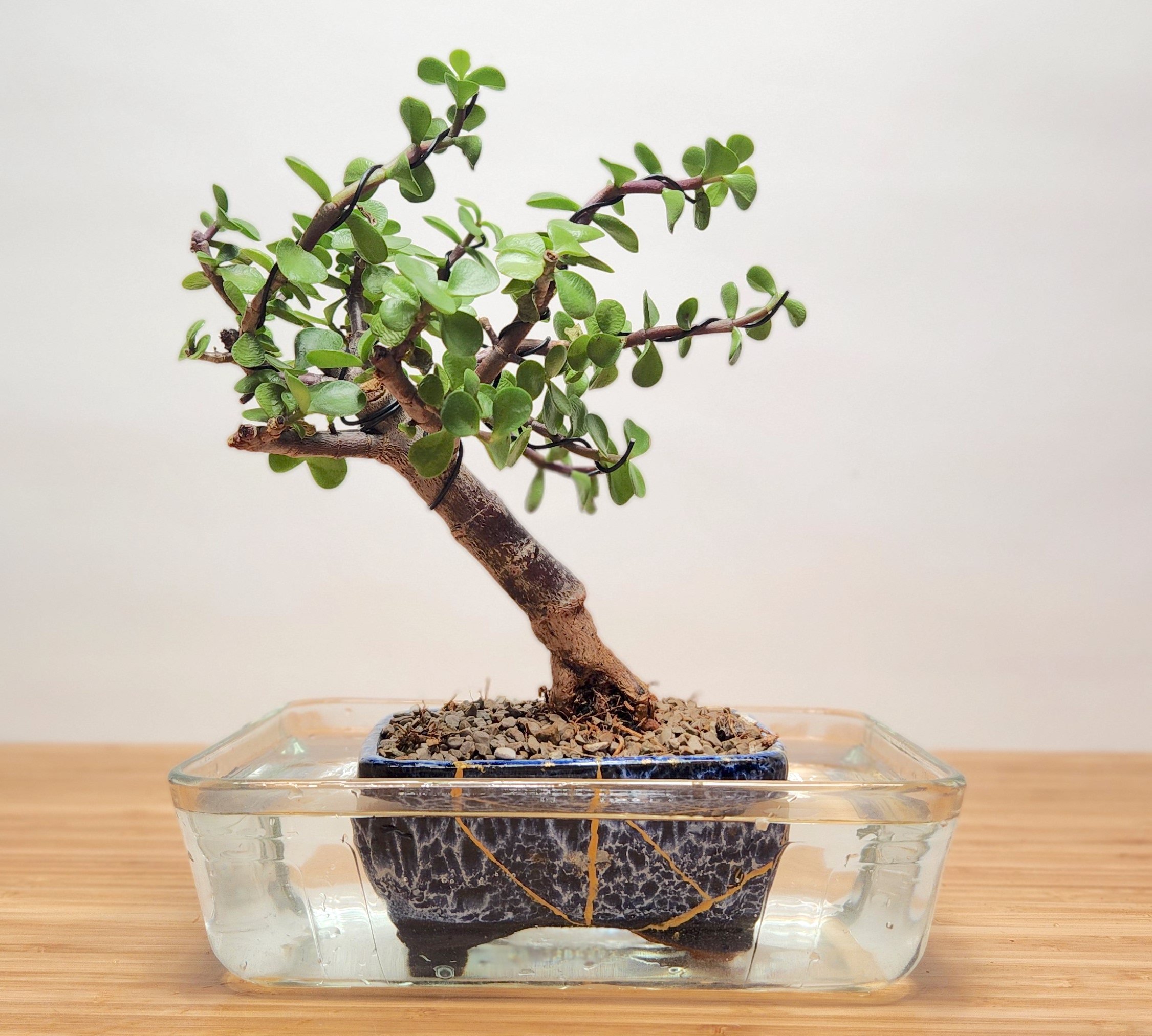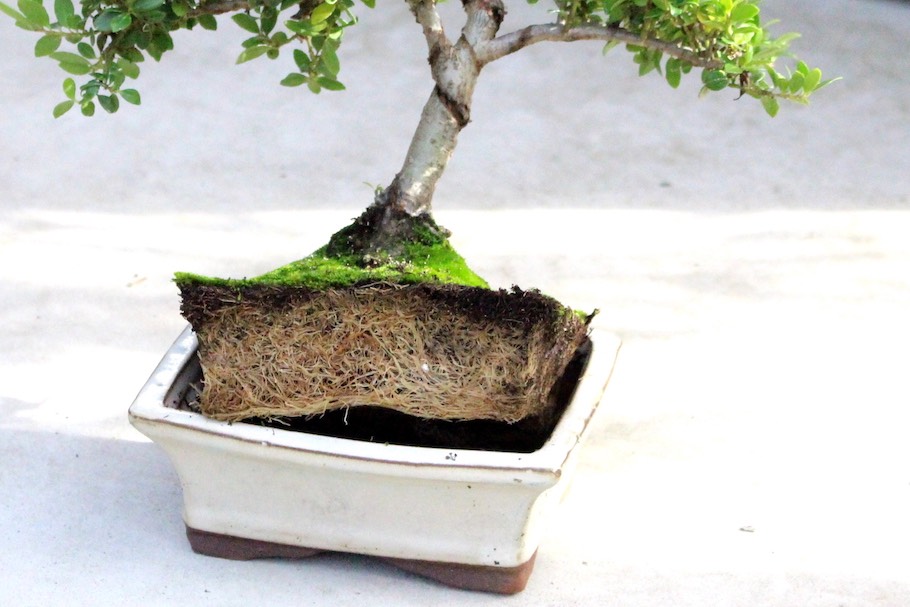A bonsai tree typically needs watering every 2-3 days. The soil should be moist, not waterlogged.
Bonsai trees require careful and consistent watering to thrive. Overwatering or underwatering can harm them. The frequency of watering depends on factors like tree species, pot size, and environmental conditions. During hot weather, more frequent watering is necessary. Check the soil moisture daily by touching the top layer.
If it feels dry, it’s time to water. Ensure good drainage to prevent root rot. Proper watering is crucial for maintaining the health and beauty of your bonsai tree. Regular monitoring and adjustments to your watering routine will help your bonsai flourish. Remember, the right amount of water is key to a healthy bonsai.
Introduction To Bonsai Watering
Watering a Bonsai tree can seem tricky. Bonsai trees are small but need careful attention. Proper watering is crucial for their health. Too much or too little water can hurt them.
Importance Of Watering
Water is vital for Bonsai tree health. It helps them grow and stay strong. Plants need water to carry nutrients. Without enough water, a Bonsai tree can dry out and die.
Over-watering can also be a problem. Roots can rot if they stay wet too long. It’s important to find a balance.
Common Watering Myths
There are many myths about Bonsai watering. One myth is that Bonsai trees need watering every day. This is not always true. The amount of water depends on the tree type and the weather.
Another myth is that Bonsai trees need special water. Regular tap water is usually fine. Just make sure it is not too cold or too hot.
Some people think Bonsai trees should be misted. Misting is not a substitute for watering. It can help in dry climates but does not provide enough water.
Factors Affecting Water Needs
Bonsai trees need different amounts of water. Several factors influence this. Understanding these factors helps you care better for your bonsai tree.
Tree Species
Different bonsai species have different water needs. Some need more water. Others need less. For example, a Ficus bonsai needs more water. But a Juniper bonsai needs less. Knowing your tree species helps you water it right.
Climate And Season
Climate affects how much water your bonsai needs. In hot weather, bonsai trees need more water. In colder climates, they need less. Seasons also impact water needs. In summer, water more often. In winter, water less often. Monitor your bonsai to adjust watering.
Soil Type
Soil type influences water needs. Some soils drain quickly. Others hold water longer. Fast-draining soil needs more frequent watering. Soil that holds water needs less frequent watering. Use a well-draining soil mix for your bonsai. This helps prevent root rot.
Signs Of Under-watering
Understanding the signs of under-watering is crucial for maintaining a healthy bonsai tree. If your bonsai lacks water, it will show certain symptoms. Recognizing these symptoms early can save your tree.
Wilting Leaves
Wilting leaves are a clear indicator of under-watering. Leaves lose their firmness and droop. They may also turn yellow or brown. This means the tree is stressed due to lack of moisture. Check your bonsai daily to spot wilting leaves early.
Dry Soil
Dry soil is another sign of under-watering. Insert your finger about an inch into the soil. If it feels dry, the tree needs water. Consistently dry soil can harm the bonsai’s roots. Ensure the soil remains slightly moist, but not soggy.
Keep an eye on these signs to keep your bonsai tree healthy and thriving. Proper watering ensures the tree’s longevity and beauty.
Credit: www.quora.com
Signs Of Over-watering
Over-watering is a common issue for bonsai tree enthusiasts. Recognizing the signs early can save your tree. Below, we’ll discuss the key indicators of over-watering.
Yellowing Leaves
Yellowing leaves are a primary sign of over-watering. Healthy bonsai leaves are vibrant and green. Over-watering causes the leaves to turn yellow. This happens because the roots can’t breathe. They suffocate in too much water.
Check the soil if you notice yellow leaves. Is it always wet? Does it smell musty? These are clear signs. Your bonsai needs less water.
Root Rot
Root rot is another serious issue. It is caused by over-watering. Roots need oxygen to stay healthy. Too much water drowns them. This leads to root rot. You can identify root rot by inspecting the roots. Healthy roots are white or light tan. Rotted roots are brown or black and feel mushy.
Use a sharp knife to check the roots. Cut a small section. Are the insides brown or black? If yes, your bonsai suffers from root rot. Act quickly to save your tree.
Optimal Watering Techniques
Understanding the optimal watering techniques for a bonsai tree is crucial. Proper watering ensures the tree remains healthy and vibrant. This guide will help you master the perfect watering methods for your bonsai.
Watering Frequency
Bonsai trees need a specific watering schedule. Over-watering or under-watering can harm them. The frequency of watering depends on several factors:
- Type of bonsai tree
- Size of the pot
- Climate conditions
- Season of the year
Generally, bonsai should be watered every few days. Check the soil moisture before watering. The topsoil should be slightly dry but not completely dry.
Best Time To Water
The timing of watering your bonsai is important. Watering at the right time ensures the tree absorbs the needed water efficiently.
Early morning is the best time to water your bonsai. This allows the tree to absorb water before the sun becomes too hot. Evening watering is also suitable but avoid late evening to prevent root rot.
| Time of Day | Benefits |
|---|---|
| Early Morning | Ensures water absorption before heat |
| Evening | Prevents water evaporation |
Using these optimal watering techniques will keep your bonsai healthy. Remember to adjust based on your specific bonsai needs and environment.

Credit: bonsaibar.com
Tools For Effective Watering
Watering your bonsai tree correctly ensures its health and growth. Using the right tools makes this task easier and more effective. Let’s explore two essential tools for watering your bonsai tree.
Watering Cans
A watering can is perfect for delivering the right amount of water. Choose a can with a long spout. This helps you reach the base of the bonsai tree easily. Select one with a fine rose at the end. This creates a gentle shower effect. It prevents soil erosion and keeps the soil intact.
Watering cans come in various sizes. Pick one that fits your bonsai size and watering needs. A small can is ideal for indoor bonsai. A larger can is suitable for outdoor bonsai. Ensure the can is lightweight. This makes it easier to handle and control the water flow.
Misting Bottles
A misting bottle helps maintain humidity around your bonsai tree. Bonsai trees love a humid environment. Misting keeps the leaves moist and healthy. Choose a bottle with an adjustable nozzle. This lets you control the mist intensity.
Misting bottles are easy to use. Fill the bottle with clean water. Spray a fine mist over the leaves. Do this in the morning. It ensures the leaves dry by evening. This prevents fungal growth on the leaves. Misting is especially important for indoor bonsai. Indoor air can be dry, especially in winter. Regular misting keeps your bonsai happy and healthy.
| Tool | Purpose | Features |
|---|---|---|
| Watering Can | Delivering water to the soil | Long spout, fine rose, lightweight |
| Misting Bottle | Maintaining leaf humidity | Adjustable nozzle, easy to use |
Seasonal Watering Tips
Proper watering is crucial for the health of your bonsai tree. Different seasons require different watering habits. Understanding these seasonal watering tips can help you maintain a thriving bonsai tree all year round.
Spring And Summer
During spring and summer, bonsai trees grow actively. They need more water during these seasons.
- Check the soil daily. Water when the topsoil feels dry.
- Use a watering can with a fine nozzle. This ensures even water distribution.
- Water in the early morning or late afternoon. Avoid the midday sun.
It’s important to keep the soil moist but not waterlogged. Overwatering can cause root rot. Underwatering can lead to dehydration.
Fall And Winter
In fall and winter, bonsai trees enter a dormant phase. They need less water during these seasons.
| Season | Watering Frequency |
|---|---|
| Fall | Every 3-5 days |
| Winter | Every 5-7 days |
Check the soil moisture before watering. Use a moisture meter for accuracy. Avoid using cold water during winter. Cold water can shock the roots.
By following these seasonal watering tips, you can ensure your bonsai tree remains healthy throughout the year.

Credit: www.bonsaiempire.com
Conclusion
Ensuring your bonsai tree gets the right amount of water is crucial. Monitor soil moisture regularly. Adjust watering habits based on the tree’s needs and environmental conditions. Healthy watering practices lead to a thriving bonsai. Keep experimenting until you find the perfect balance.
Happy bonsai growing!

